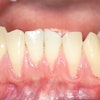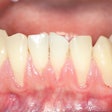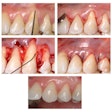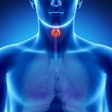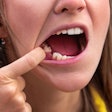Irrigation with ozonated water may be an effective alternative to saline solution treatment for patients with pericoronitis by relieving pain and boosting quality of life, according to a study recently published in BMC Oral Health.
However, additional studies may be needed to fully understand its advantages and possible uses in dentistry, the authors wrote.
“Ozonated water demonstrated similar efficacy to saline solution in managing pericoronitis, suggesting its potential as a viable alternative treatment,” wrote the authors, led by Célio Leone Ferreira Soares of the Federal University of Jequitinhonha and Mucuri Valleys in Brazil (BMC Oral Health, July 28, 2025, Vol. 25, 1271).
The study’s objective was to compare the clinical effects and quality of life outcomes of treating pericoronitis in lower third molars using ozonated water (OZO) versus physiological saline solution (SAL). Adult patients with pericoronitis were treated with irrigation using either OZO (n = 5) or SAL as a control (n = 5), with pain and quality of life as primary outcomes, they wrote.
Pain was evaluated using the visual analog scale at baseline and at one, three, seven, 15, and 30 days after treatment. Edema and erythema were measured with dental floss and a mm ruler, and quality of life was assessed using the Oral Health Impact Profile-14 (OHIP-14), the OHIP-14 Periodontal Disease-Br (PD Br), and the Short Form-36 (SF-36) at baseline and 30 days.
In the intragroup analysis, both the SAL and OZO groups showed improvement in certain parameters. The SAL group demonstrated significant improvement in pain and edema/erythema extent (p = 0.018; p = 0.002), while the OZO group improved in edema and erythema extent (p = 0.002), they wrote.
For quality of life, the SAL group showed changes in OHIP-14 and OHIP-14 PD Br scores (p = 0.043; p = 0.042), and the OZO group showed improvement in OHIP-14 and in the general health status domain of the SF-36 (p = 0.041; p = 0.034). No significant changes were observed in any other SF-36 domains or additional evaluated parameters.
Nevertheless, the study had limitations. Ozonated water was only in contact with pericoronitis for short exposure times, highlighting the need for larger, high-quality studies, the authors wrote.
“It can be speculated that ozonated water is an alternative irrigant for debridement treatments of pericoronitis cases,” they concluded.

